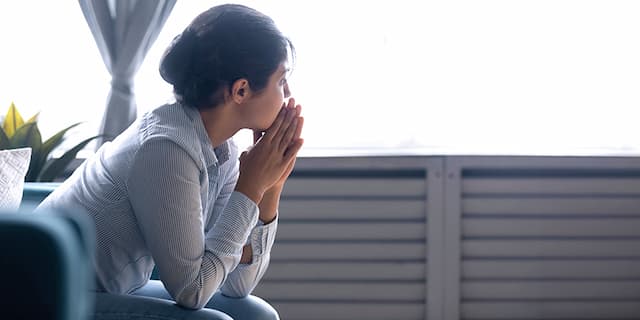Landscape Photography Settings: Relearning what we know for amazing sharpness -
Landscape Photography Settings: Relearning what we know for amazing sharpness

Landscape photos are by far some of the most awe-inspiring images we can capture. From beautiful mountain ranges, ocean waves, forests, plains, sometimes even a few outside our front door. But what our eyes see seems to always leave us a little disappointed once we get the RAW image on the screen. So many things come into play in a landscape that it is hard to know exactly what your landscape photography settings should be to mimic the beauty you are seeing. Nothing can affect this more than your aperture. We are going to look at the different aperture ranges and when to use them to get the best results in your landscapes.
What can affect your Landscape images
Obviously, there are countless variables that directly affect the outcome of your landscapes, but they typically can be broken down into two categories: environmental and technical/gear.
Just to simplify these, environmental would be the time of day, weather, landscape type, wind, sun glare, etc. These are things you really cannot change unless you just change the day or time to photograph. But the technical side, we have full control. This is the type of lens you are using, camera, filters, tripod, and settings. Like, if you are taking pictures without a tripod, your shutter really shouldn’t be below 1/120 sec. If it’s bright outside, you should utilize your lowest ISO (e.g., 100) if possible. And that is not to mention your lens. Every lens is different, and before going out on a landscape shoot, you should know where your lens best performs.
That means taking test shots at different apertures to find where you lens is the sharpest, seeing where diffraction (blurring as you stop down) starts setting in. Once you know that, you are ready for the next part, but I will give you the general range of lens and some recommendations to make sure you are getting the effect you intended. Beyond landscape photography settings, I’ll even throw in some of the gear I use at the end in case you are interested.
Aperture: Landscapes Photography Settings
Aperture f/4 and below
If your landscape aperture is around f/4.0 or below, you are obviously interested in some creamy bokeh over tack sharp images. And that is okay, especially with real intimate landscapes or wildlife. If you know your focal point and you want to ensure they are at the center of attention, this is a great range to get them sharp and blur their surroundings. However, if you are wanting to capture a sweeping mountain-scape, this is obviously not the aperture range for you.

Another reason to drop below f/4? Astrophotography. Capturing the stars requires a wide-open aperture to let in more light without having to increase the shutter speed too much. I mean, at the end of the day, the earth is moving. Unless you want star streamers, you must lay off the shutter a bit.
Lastly, if you are in low light, but there is some movement in your image that you do not want blurred, your only choice is going to be widening the landscape aperture. Even if you lose sharpness, it’s a lot better than unintentional blurring, right?
Aperture f/8-f11
The sweet spot, the bread-and-butter aperture range of the landscape photographer. This is where most camera lenses will perform at their best to ensure crisp, clean images; or at least as good as your lens and camera body can produce. This is the spot where you are leaving bokeh behind but not so far that diffraction begins to set in. The trick here is finding the appropriate ISO, find where you want the viewer’s eyes, focus on that point, set your shutter speed for proper exposure, and snap the picture. Practice and know how each of your lenses perform in this range and where you can set up to get the sharpest images every time.

Me personally, I find that almost all my Canon and Tokina lens perform best right at f/8 and my one Sigma lens does fantastic at f/11. Therefore, when I go out, I already have an idea of what my landscape photography settings are going to be and am preset as soon as I get to my spot. Many times, with good lighting I may not even take a tripod. I just grab a monopod to save my arms and off I go. But obviously, if I am going to be around moving water, I always take the tripod just in case I want a few long exposures.
Aperture f/16 and above

From every early class, we are told that the narrower your aperture, the less light enters the lens, but it leads to sharper landscapes. Well, that might be true if diffraction didn’t happen; but the truth is, it does. Once you get to f/16, diffraction really comes into play and as you are reaching into the f/22 range, you are losing significant sharpness. With diffraction, the aperture is so small that light is spread out because it is passing through such a narrow hole. This starts directly effecting your clarity. With this, you may end up with a sharp foreground or distance with quality loss in between. But don’t think you can’t go this narrow, there are some great reasons to stop down.

A small aperture is the perfect way to get star bursts, also called sun stars. And sometimes, your aperture just has to creep to those higher numbers to capture images in bright conditions. But I would highly recommend finding your sweet spot when it comes to landscapes in the f/8 to f/11 range and using a higher shutter speed then ND filters as necessary to keep from overexposing.
Takeaways Landscape Photography Settings
The key takeaway is that we must start getting familiar with our cameras and lenses. Not enough photographers go out and just shoot and change settings to see how those changes affect their sharpness, bokeh, lighting, blur, and grain. Never, do I go out on a long hike to catch a sunrise and leave my camera in one setting while taking dozens of pictures. Normally, I might do a burst or two in one setting, then change it up a bit. I change focal points and perspectives, do a portrait orientation or two for more sky, throw a polarized filter or ND filter on, use a wide-angle lens, take some with a telescopic lens.
I am there to experiment. When the conditions are perfect, I utilize that short window to get the pictures I intended to capture. But once I am satisfied, then I get creative. I cannot tell you how many happy accidents occur when I just get outside my process and try something new. I always arrive with a plan and get what I need, but then, I get crazy and see if any magic happens.
What’s in my bag on a Landscape Shoot?
Your bag and your camera are two things that are personal to you. Everyone knows that I am a Canon guy, but that is only because I am familiar with their bodies and menus. I have traded many Canon lenses for other brands. So, the lenses I will recommend come for mounting in a wide array of different cameras. I’ll give you links for Canon and Nikon, but I am sure you can find what you are looking for outside of these two major brands. *Note: I only use full frame cameras
My super wide-angle lens

After using too many of these to count, I settled on the Tokina 16-28MM 2.8. Canon EF/Nikon F. This wide-angle lens is absolutely fantastic for stunning views. Normally I use it where I are having trouble getting everything in with anything above 24mm. In bright sun though, I get major glare, but that’s standard for super wide-angle. Also, most super wide angles are very expensive to fit for filters. But even if you only use this for night photography and astrophotography, it’s worth having in your bag.
My Bread-and-Butter wide-angle lens

Tokina 24-70mm 2.8 Canon EF. I absolutely love the images this thing produces, but it is a tank. Through my testing, I have found Tokina to be a less known, but very reasonably priced lens; built like a brick. They get comparative optics to the best lenses in the industry, but that discount comes with extra weight. I don’t mind it, but it is a factor when you are carrying three or four of these suckers around. But this is the lens that sits on my camera when I get to a landscape shoot.
Many photographers bring a 70-200 2.8, with good reason. I leave mine at home when shooting landscapes and replace it with the big gun up next…
My “Good Lord this is heavy, why did I bring this thing… but always seem to use it lens”

Sigma 150-600mm 5-6.3 Contemporary. Canon EF/Nikon F. Carrying this thing around, tourists and hikers are going to think you work for Nat Geo. It’s a big lens. It’s hard to pack in many bags, it’s heavy, and man…. does it capture some great pictures! I leave my 70-200mm for the extra range of this lens, but some days I wish I hadn’t due to weight. However, I always seem to find something in the distance. An eagle flying or something that makes the weight worth it every time. When taking landscapes, sometimes you want to snap a few tighter shots, so you don’t have to crop half your image, that’s where taking a telephoto lens comes in really handy. But build up those shoulder muscles and definitely bring at least a monopod.
Now a Springtime addition. Sometimes, during the right time of the year, I throw my Tokina 100mm 2.8 Macro (Canon EF/Nikon F) in my bag. This is just in case I find some neat flowers, bugs or mushrooms to get. Why waste the trip? And this lens is the macro photographer’s dream, but at a really good price.
Then all the rest of my stuff. I bring ND Filters (depends on lens size) and polarized filter (depends on lens size). Last, a Joilcan Tripod and 20 ounces of piping hot coffee in my Yeti! If you are interested in what filters I use, just drop a comment or question below. Let me know which lens you are looking at; I’ll shoot you a link to what I bought.
Photography and writing by Jon Frederick. See more of my work on Instagram!
I am a conceptual fine arts photographer and author for Seven11. Together with my wife, Kathleen, we pull inspiration from our photography to deliver messages of Christian encouragement to help others in their walk with Jesus. In addition to our writing, we also run a Christian podcast where we put “Christ in Focus.”As a separate mission, I author a photography blog to help new photographers develop their skills, learn tips and tricks, find reliable equipment, and I provide free mentorship. My goal is to prove to new photographers and models that they can pursue their dreams in fine art while staying true to their Christian values.
View all posts by Jon & Kathleen Frederick




